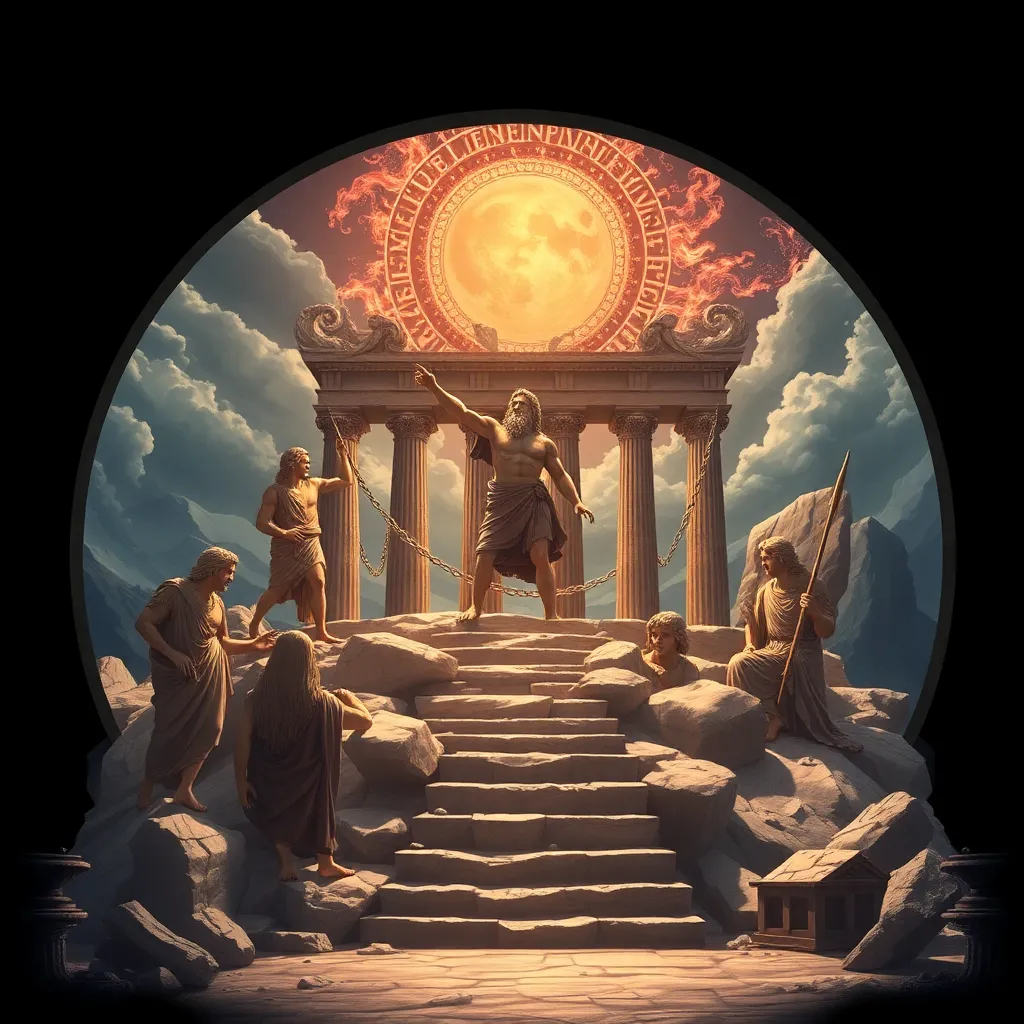The Legends of Hercules and His Trials on Mount Olympus
I. Introduction to Hercules: The Hero of Mythology
Hercules, known in Greek mythology as Heracles, stands as one of the most celebrated heroes of ancient lore. His tales of strength, bravery, and resilience have endured for centuries, making him a symbol of heroism across various cultures. Hercules is often depicted as the quintessential hero, renowned for his incredible feats and adventures.
Born to Zeus, the king of the gods, and Alcmene, a mortal woman, Hercules’ lineage is steeped in divine and human conflict. His very existence was marked by Hera’s jealousy, which fueled many of the challenges he would face throughout his life. Hercules’ significance extends beyond his mythological stories; he embodies the values of courage and perseverance that were highly esteemed in ancient Greek culture.
II. The Twelve Labors of Hercules: An Overview
The Twelve Labors of Hercules serve as a narrative framework for his mythos. Each labor represents a significant challenge that Hercules must overcome as penance for a crime—orchestrated by Hera—that led to the tragic death of his wife and children. The Labors not only illustrate Hercules’ physical prowess but also his mental fortitude and determination to reclaim his honor.
Hera, the goddess of marriage and the wife of Zeus, plays a pivotal role in Hercules’ story. Her jealousy and spite lead her to inflict madness upon him, resulting in his tragic actions. The Twelve Labors are a means for Hercules to atone for his past and prove his worthiness as a hero.
III. The Nemean Lion: The First Labor
The first labor assigned to Hercules was to slay the Nemean Lion, a fearsome creature with impenetrable skin. The lion terrorized the region of Nemea, and many warriors had attempted to defeat it, only to fail miserably.
Hercules devised a clever strategy to confront the beast. After an intense battle, he realized that his weapons could not pierce the lion’s hide. Instead, he used his immense strength to strangle the lion to death. Once defeated, Hercules skinned the lion using its own claws, thus creating an iconic cloak that symbolized his victory.
This labor established Hercules’ reputation as a formidable hero, showcasing not only his strength but also his ingenuity in overcoming seemingly insurmountable odds.
IV. The Lernaean Hydra: The Second Labor
The second labor brought Hercules face-to-face with the Lernaean Hydra, a multi-headed serpent that regrew two heads for each one that was severed. This regenerative ability made the Hydra a terrifying adversary, and it was said to dwell in the swamps of Lerna.
To assist him, Hercules called upon his nephew Iolaus. Together, they devised a plan: while Hercules battled the Hydra, Iolaus would use a flaming brand to cauterize the necks after they were severed, preventing them from regenerating. After a fierce struggle, they succeeded in defeating the Hydra, and Hercules buried its immortal head under a heavy rock.
The Hydra symbolizes the personal challenges and struggles that individuals face, particularly the idea that some problems may seem to multiply in intensity the more we try to combat them.
V. The Ceryneian Hind: The Third Labor
The third labor required Hercules to capture the Ceryneian Hind, a sacred creature associated with Artemis, the goddess of the hunt. The hind was known for its incredible speed and agility, making it a daunting task for any hunter.
Hercules pursued the hind for an entire year, demonstrating his perseverance and respect for the creature’s sacred status. When he finally captured it, he did so without harming it, showcasing his respect for nature and the divine. This labor emphasizes themes of reverence and the moral complexities of heroism.
VI. The Erymanthian Boar: The Fourth Labor
The fourth labor tasked Hercules with capturing the Erymanthian Boar, a massive beast that terrorized the region of Erymanthos. The boar was known for its ferocity and strength, making it a challenging adversary for the hero.
Hercules used his cunning and determination to corner the boar in deep snow. He then captured it alive and brought it back to King Eurystheus, who was so frightened by the creature that he hid in a large pithos (jar) upon its arrival. This labor highlights the themes of strength, endurance, and the fine line between man and beast.
VII. Trials Beyond the Labors: Hercules’ Continued Challenges on Mount Olympus
Beyond the Twelve Labors, Hercules faced numerous other trials and tribulations. His time on Mount Olympus was marked by interactions with various gods and goddesses, each presenting their own challenges. Hercules’ relationships with figures like Athena, who often aided him, and Hera, who continued to resent him, were pivotal in shaping his journey.
Hercules’ character evolved through these experiences. He transformed from a mere mortal into a hero of legendary status, reflecting on themes of redemption, sacrifice, and the quest for immortality. His trials served not only as a means of proving his strength but also as a path to understanding his own identity and purpose.
VIII. Conclusion: The Legacy of Hercules in Modern Culture
The tales of Hercules have left an indelible mark on contemporary storytelling, influencing literature, film, and popular culture. His adventures continue to inspire new generations, symbolizing the timeless themes of heroism, perseverance, and the struggle against adversity.
Hercules embodies the ideal of the hero’s journey, facing both external challenges and internal demons. His legacy endures as a symbol of strength and resilience, reminding us that true heroism is not merely about physical power but also about the courage to confront one’s own limitations and the will to rise above them.
In conclusion, Hercules remains an enduring figure in mythology, a testament to the human spirit’s capacity for greatness in the face of overwhelming odds.




